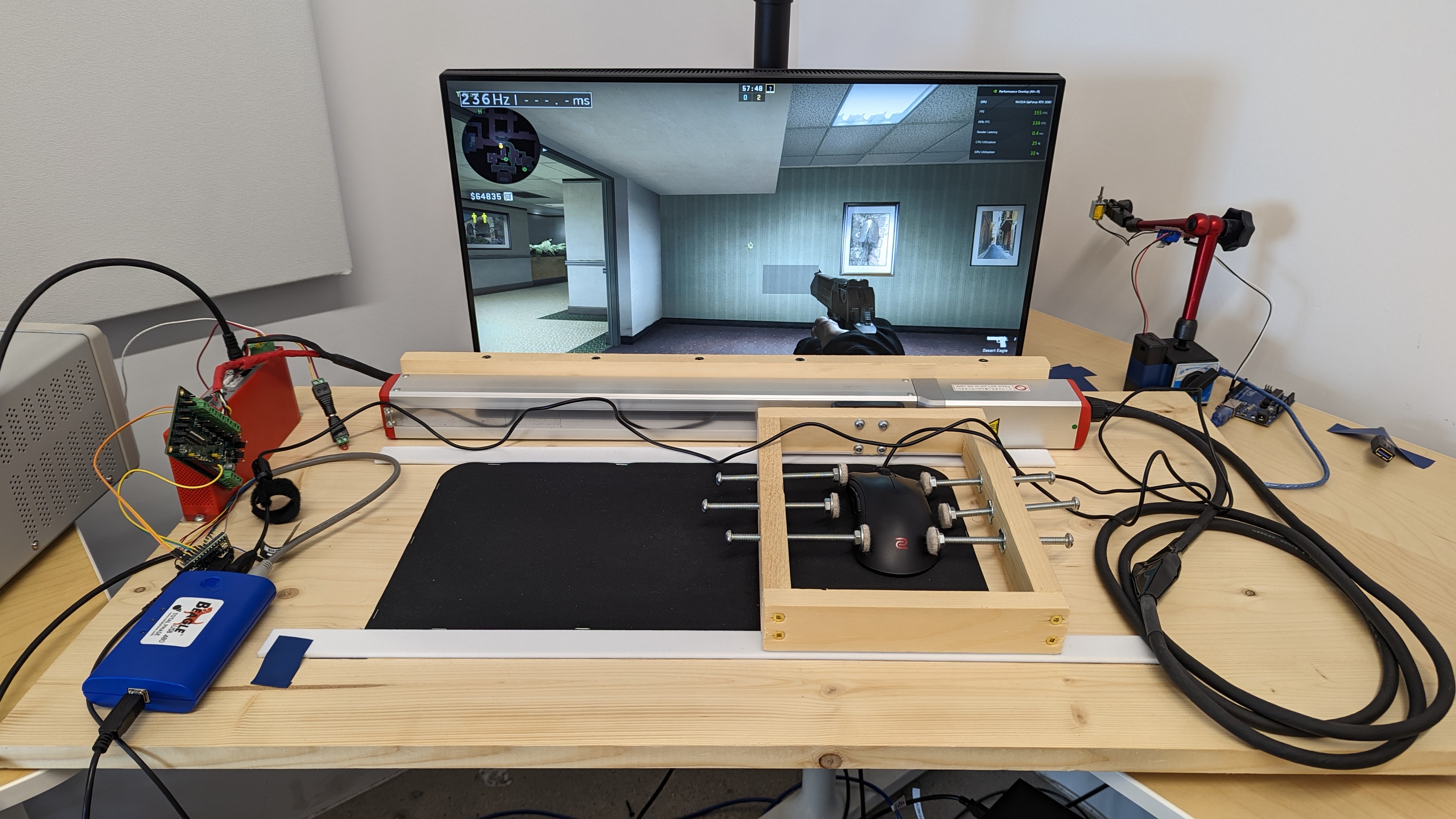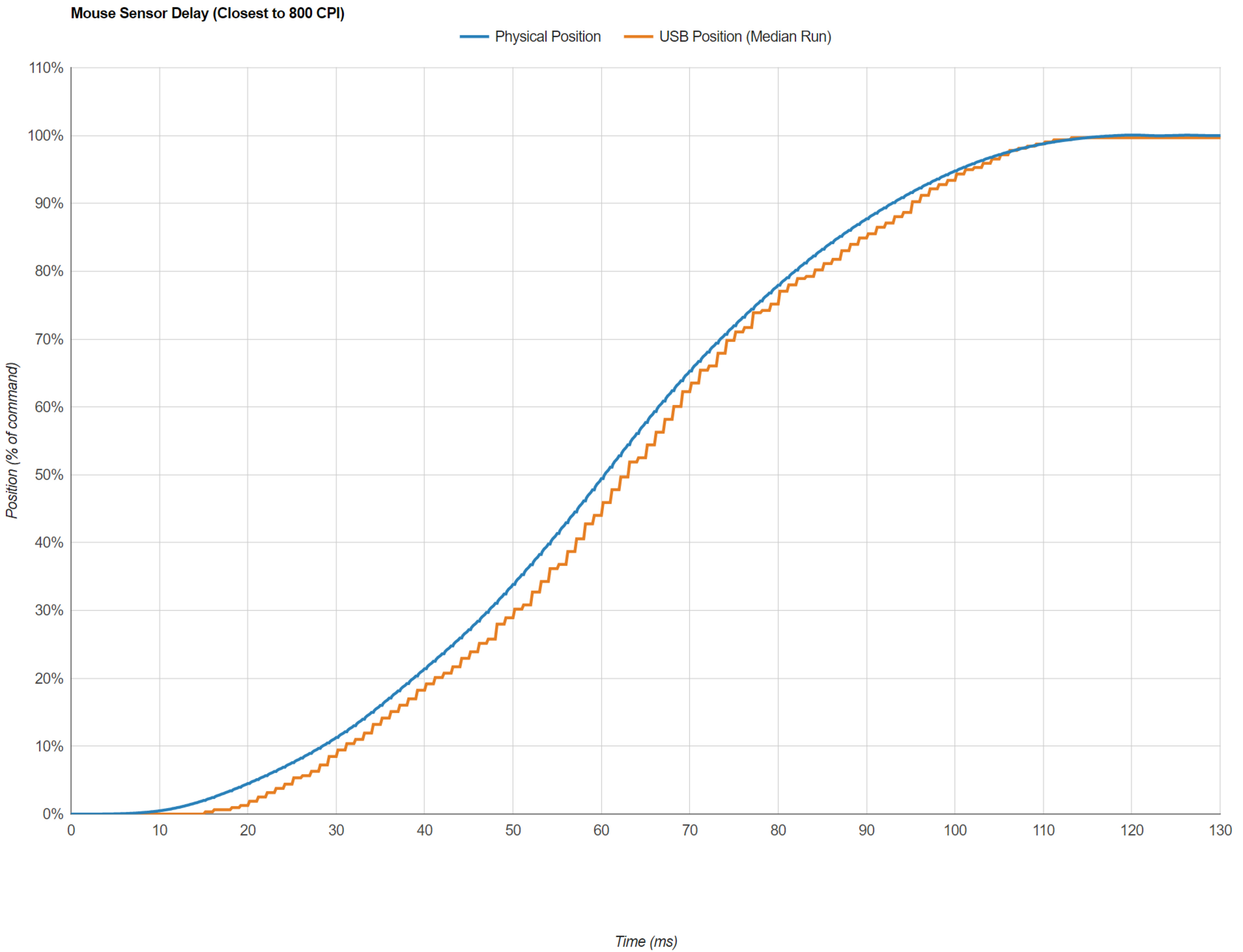The sensor latency test aims to measure how a mouse sensor responds to physical movement and how quickly and accurately it translates that movement into cursor movement on-screen.
Before we begin, a clarification about terminology: in precise terms, sensor latency refers to the time it takes for your computer to register the beginning of movement.
However, this measurement on its own doesn't fully express a sensor's performance as it only addresses one aspect of sensor-related movement delay that can occur when using a mouse. This test not only measures the latency at the beginning of a but also the common lag that occurs both during a mouse movement and at the endpoint of a mouse movement. This method provides a more realistic representation of how you experience sensor delay while using your mouse.
For simplicity, we refer to this entire phenomenon as sensor latency throughout this article, with the understanding that the term more correctly refers only to the delay at the beginning of a movement.

Test results
When It Matters
Sensor latency isn't an issue for everyday use, productivity tasks, and casual gaming. Most modern mouse sensors, even in budget models, have reasonably low latency, and most people won't notice any difference in movement delay between mice.
For competitive gaming, you want your mouse to have as little sensor latency as possible so that the physical movements you make with your mouse closely match the cursor movements on the screen. While there are measurable differences, lower sensor latency won't dramatically improve your gaming experience or performance, though it can still have a small impact at a high competitive level. It's also important to remember that other factors, like having a powerful enough computer and a monitor with low input lag, contribute to minimizing movement-related delays.
For reference, compare the slow-motion footage from a mouse with very low sensor latency with one with very high sensor latency.
Our Tests
To perform our sensor latency test, we use a wooden clamping box that secures the mouse during testing and an automated actuator assembly that performs mouse movements. Additional equipment includes a Beagle 480 USB Analyzer to isolate device latency from end-to-end (e2e) system latency, and two separate computers: a gaming PC that performs an in-game test, and a dedicated capture computer.
We perform ten movement runs at 3200 CPI, a value high enough to saturate higher polling rates at our test speed while avoiding the smoothing or interpolation some mice may introduce at much higher CPI levels. While many users play at 800 or 1600 CPI, 3200 provides a representative view of overall sensor behavior.
Each run is conducted at 200 mm/s over a distance of 10 mm. The results are displayed as a transition graph, an example of which you can see below.

A mouse with a hypothetically perfect sensor will result in a graph with both curves overlapping. The more sensor latency a mouse has, the further the USB Position will be from the Physical Position.
You can browse all of the graphs generated for each of our tested mice using our comparison tool.
Delay To Start Of Movement
The delay to start of movement result is relatively consistent between most mice. For this reason, the results of this test have the lowest weight in calculating our total sensor latency score.
Delay At Half Movement
The delay at half movement result is where the most measurable differences are observed. This result carries the heaviest weight in how we determine the Sensor Latency score of a tested mouse.
The results of this test are calculated by measuring the time between when the encoder registers the actuator at the 50% point of total travel and when the USB analyzer registers the mouse at the 50% point of total travel for each run.
Delay To End Of Movement
The results of this test are calculated by measuring the time between when the encoder registers the actuator at the 98% point of total travel and when the USB analyzer registers the mouse reaches 98% of total travel for each run.
How To Get The Best Results
The best way to minimize the sensor latency of your mouse is to use the maximum available polling rate, enable any available sensor performance modes, and turn off any battery saving modes. While on older mice, using a wired connection would always ensure the lowest latency, our latest test results indicate that many of the best wireless gaming mice are now on par with or in some cases even faster than the highest-performing wired-only gaming mice. In other words, limiting yourself to wired-only options is unnecessary if you're concerned about sensor latency.
Conclusion
Current sensors perform extremely well across the board. Even budget models, which aren't designed for gaming, still offer solid performance suitable for casual gaming, everyday browsing, and productivity tasks.
For dedicated gaming mice, sensor performance is almost universally excellent. A mouse that scores 8.0 and one that scores 9.7 will feel identical in play, as the differences are too small to notice and have no tangible effect on performance. With this in mind, we recommend not basing your entire buying decision on sensor latency alone. Instead, consider other factors such as shape, build quality, and feature set.